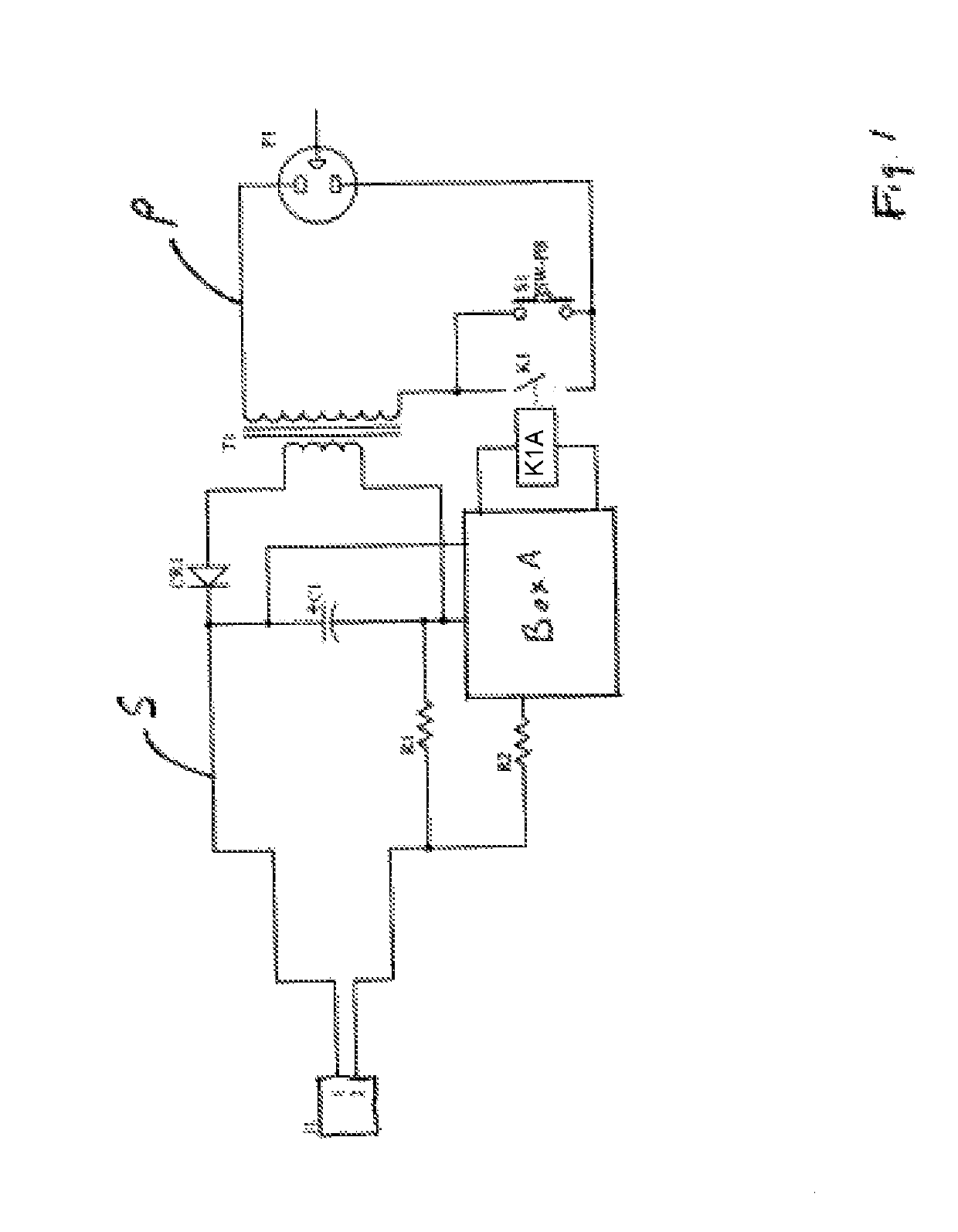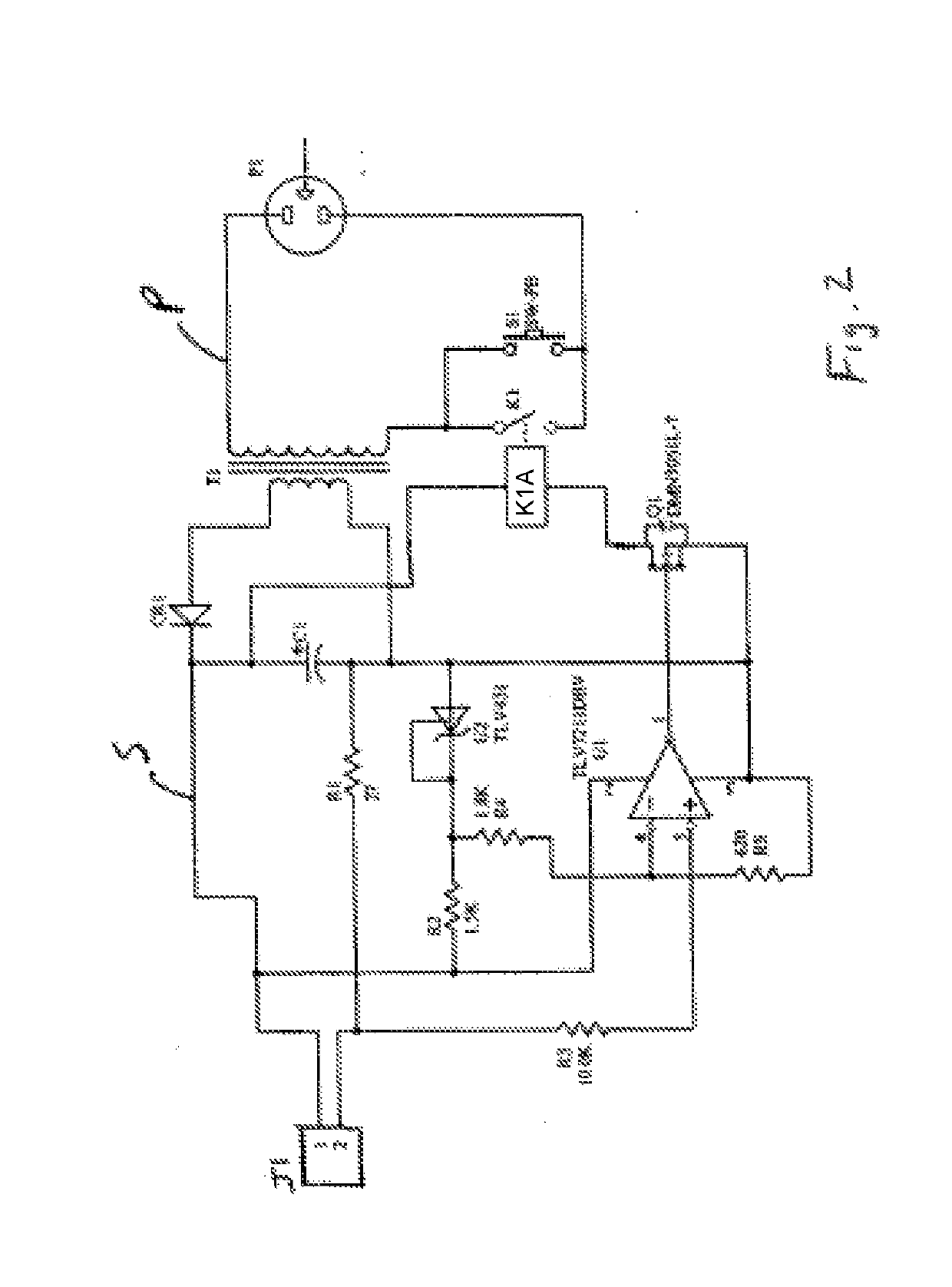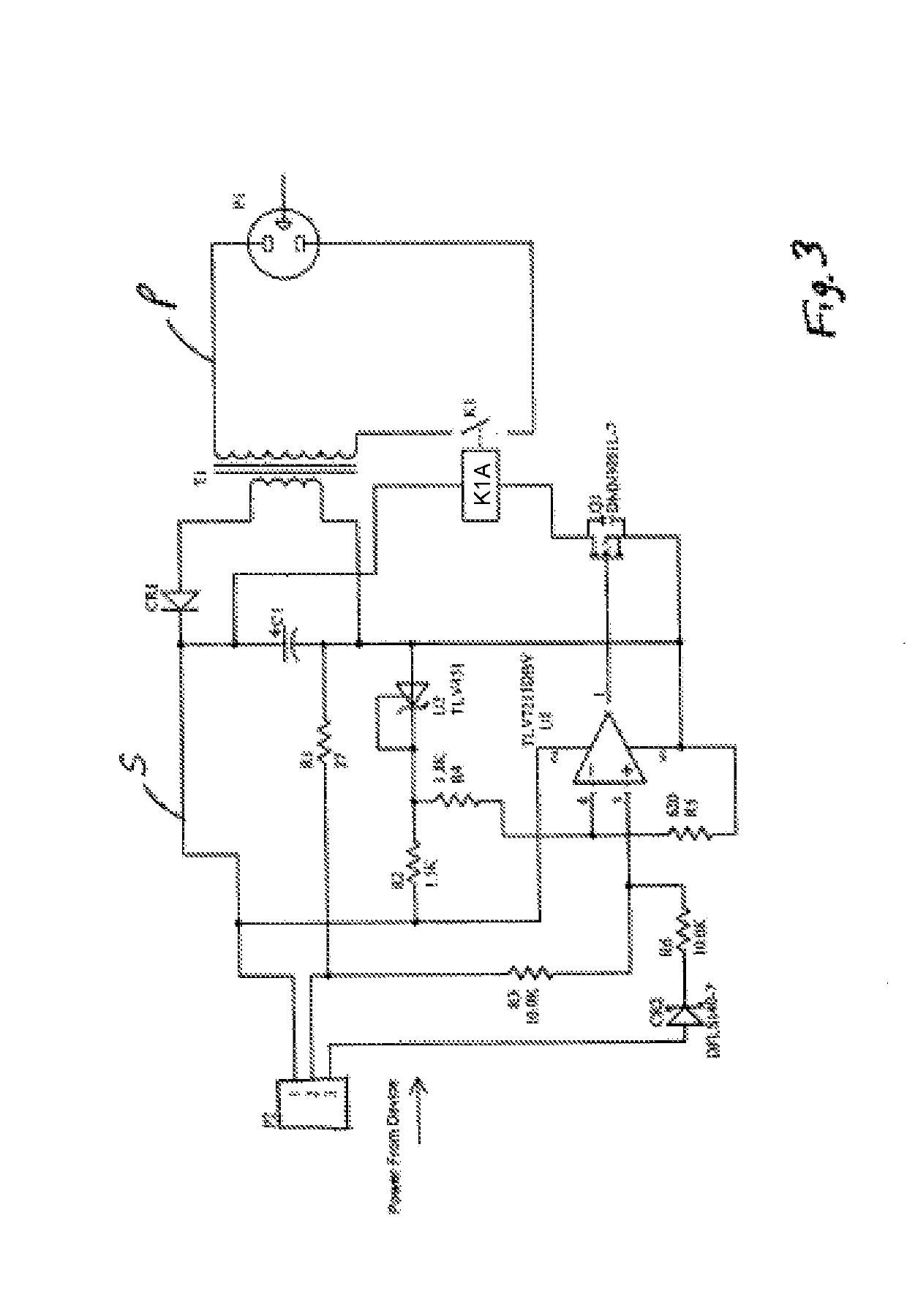Current Sensing Circuit Disconnect Device and Method
a current sensing circuit and disconnect device technology, applied in safety/protection circuits, emergency power supply arrangements, transportation and packaging, etc., to avoid spurious triggering, improve triac immunity, and improve false turn on immunity
- Summary
- Abstract
- Description
- Claims
- Application Information
AI Technical Summary
Benefits of technology
Problems solved by technology
Method used
Image
Examples
Embodiment Construction
[0037]Referring now to FIG. 2, as disclosed in this application is a circuit similar to earlier circuits but more robust. CR1 represents a diode bridge to output direct current. The secondary circuit S operates on a stepped down voltage from the input voltage on the primary circuit P, as a result of transformer T1. Transformer T1 can also be a switching transformer where there would be a primary circuit P and a secondary circuit S.
[0038]Further as shown in FIGS. 9, 9A, 9B and 10, a circuit showing a portion of the present invention includes a snubber circuit 200 in parallel with the triac 210 an optocoupler switch, which is opened to prevent current flow in the secondary side of the circuit and in the primary side, except for a small amount of current through the snubber circuit. The snubber circuit 200 includes, in series, a resistor 212 and a capacitor 214. An LED 250 is also shown as part of the optically isolated switch 205. The design of a snubber circuit involves compromises, ...
PUM
 Login to View More
Login to View More Abstract
Description
Claims
Application Information
 Login to View More
Login to View More - R&D
- Intellectual Property
- Life Sciences
- Materials
- Tech Scout
- Unparalleled Data Quality
- Higher Quality Content
- 60% Fewer Hallucinations
Browse by: Latest US Patents, China's latest patents, Technical Efficacy Thesaurus, Application Domain, Technology Topic, Popular Technical Reports.
© 2025 PatSnap. All rights reserved.Legal|Privacy policy|Modern Slavery Act Transparency Statement|Sitemap|About US| Contact US: help@patsnap.com



